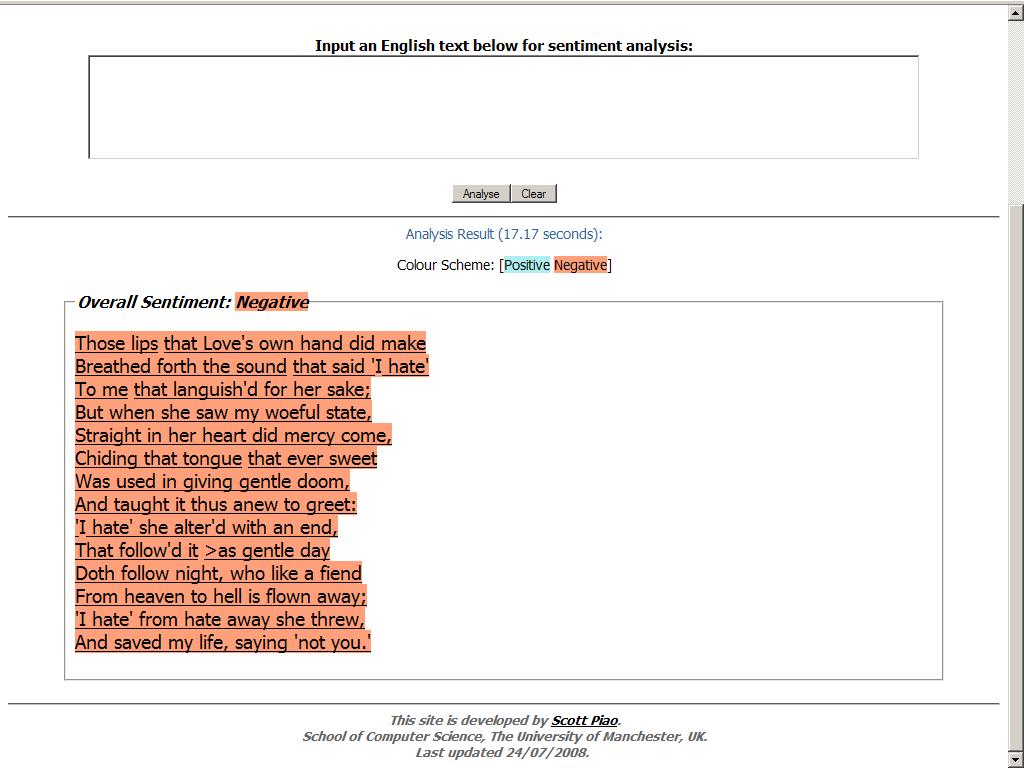I don’t doubt that Tim Burke is not incorrect to take a skeptical view of the practice of using sentiment analysis as a market research tool. Sentiment analysis, for those of you who, like me, hadn’t heard of it before, is the use of text mining techniques to determine whether a given body of text – pre-existing or generated by some algorithm – expresses positive or negative sentiments. (For more, see the New York Times article Burke links to.) In the context of market research it seems to be an attempt to use the web as a kind of natural focus group: businesses monitor online conversations in order to see whether a given set of keywords is trending positive or negative.
Burke leaves aside the issue of whether current versions of these techniques are accurate in the first place to take up the question of what businesses will do with the results they get: will they try to identify what might be causing negative sentiment or will they try to counter that sentiment through a public relations strategy of spreading around positive sentiment without changing the product or policy in question?
That’s an important question, but having just finished a computer programming course, I was curious about the sentiment analysis process itself. Most of the services I found were subscription-only or limited to the analysis of searches. And the sample code I found was way beyond my beginner programming skills. But I did manage to find this simple sentiment analysis tool at the UK’s National Centre for Text Mining that allows you to input English text and analyzes it for you.
Being a humanist at heart, I gave it Shakespeare’s Sonnet 145. I suppose that was unfair:
(click on the image for full size)
Although I have to admit, the sonnet is not without some ambiguity of feeling.
